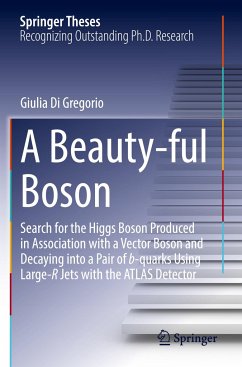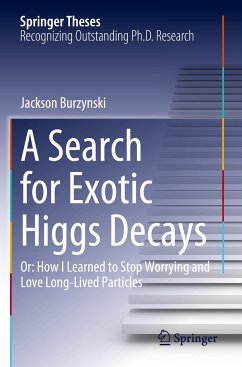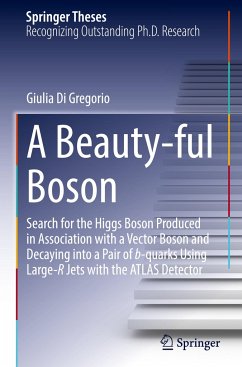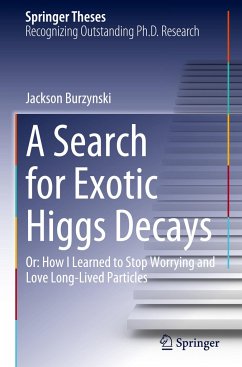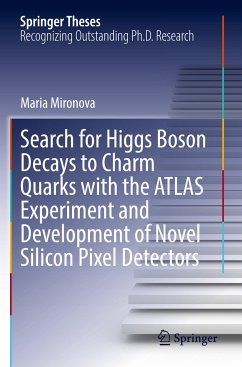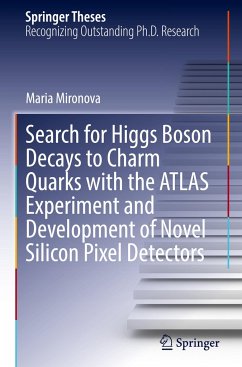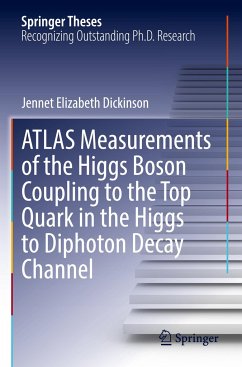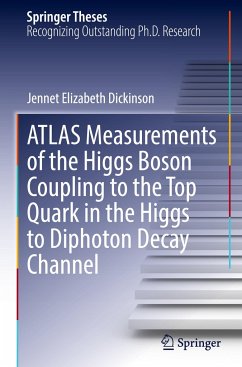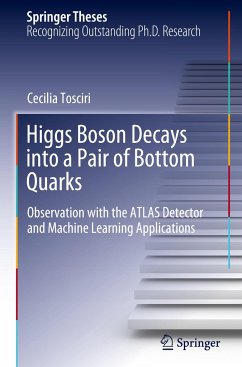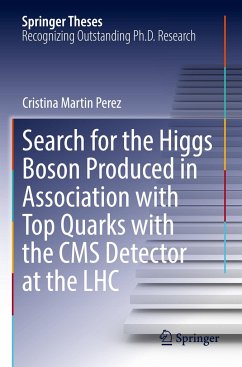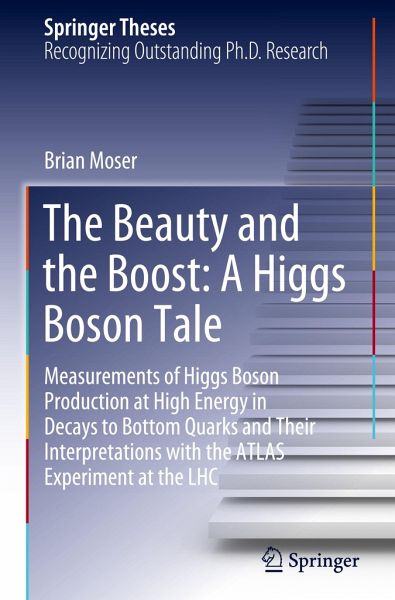
The Beauty and the Boost: A Higgs Boson Tale
Measurements of Higgs Boson Production at High Energy in Decays to Bottom Quarks and Their Interpretations with the ATLAS Experiment at the LHC
Versandkostenfrei!
Versandfertig in 6-10 Tagen
121,99 €
inkl. MwSt.
Weitere Ausgaben:

PAYBACK Punkte
61 °P sammeln!
Precision measurements of the Higgs boson's properties are a powerful tool to look for deviations from the predictions of the Standard Model (SM) of particle physics. The 139/fb of proton-proton collision data which have been collected by the ATLAS experiment during Run 2 of the LHC, offer an opportunity to investigate rare Higgs-boson topologies, which are particularly sensitive to new physics scenarios but experimentally difficult to access. Several such measurements, which target Higgs-boson decays to heavy-flavour quarks, as well as their combinations are presented in this thesis. A novel ...
Precision measurements of the Higgs boson's properties are a powerful tool to look for deviations from the predictions of the Standard Model (SM) of particle physics. The 139/fb of proton-proton collision data which have been collected by the ATLAS experiment during Run 2 of the LHC, offer an opportunity to investigate rare Higgs-boson topologies, which are particularly sensitive to new physics scenarios but experimentally difficult to access. Several such measurements, which target Higgs-boson decays to heavy-flavour quarks, as well as their combinations are presented in this thesis. A novel analysis that measures Higgs-boson production in association with a heavy vector boson V (VH, with V=W,Z) at high energies is presented. Dedicated Higgs-boson reconstruction techniques are applied to reconstruct the highly Lorentz-boosted Higgs-boson decays into pairs of bottom quarks. The measurement is subsequently combined with a VH cross-section measurement at low and intermediate pT(V) to provide a differential cross-section measurement in kinematic fiducial volumes over the largest possible pT(V) range. All cross-section measurements agree with the SM predictions within relative uncertainties that range from 30% to 300%. The results are furthermore interpreted as limits on the parameters of a SM effective field theory. Finally, a combination of measurements of Higgs decays to heavy-flavour quarks is used to experimentally determine that the Higgs-boson coupling to charm quarks is weaker than to bottom quarks, as predicted by the SM. The target audience for the thesis are physicists and physics students, in particular those with a background in high energy physics.



